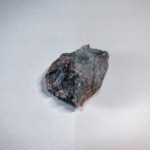Get ready to embark on an exhilarating journey through time as we uncover the mesmerizing world of fossils! In this article, we will delve into awe-inspiring fossil facts specially crafted for the intrepid Year 6 explorers. Brace yourselves for a captivating exploration of Earth’s ancient history, where extraordinary creatures and mind-boggling discoveries await. So buckle up and let’s set off on a thrilling adventure through time to unleash the secrets of our planet’s past!
Fossil Facts for Year 6: Unleashing Earth’s History
Fossils are like time capsules that transport us back in time, revealing the secrets of Earth’s ancient past. They hold the key to understanding how living organisms have evolved and adapted over billions of years. So, buckle up, young explorers, as we embark on a thrilling journey through some awe-inspiring fossil facts!
1. Fossils: The Preserved Remnants of Ancient Life
Imagine stumbling upon a footprint from a creature that roamed the Earth millions of years ago. Well, that’s exactly what fossils are! Fossils are the preserved remains or traces of once-living organisms, such as plants, animals, and even microbes. They are found in rocks of various ages and can teach us so much about Earth’s history.
Fun fact: Fossils come in all shapes and sizes, ranging from the tiny teeth of a prehistoric shark to the enormous bones of a majestic dinosaur!
2. The Art of Fossilization
Have you ever wondered how fossils are formed? It’s nothing short of a natural masterpiece! This process, called fossilization, occurs when the remains of an organism are buried in sediment (like sand or mud) and slowly transformed into rock over time.
Picture this: Think of fossilization as nature’s way of immortalizing past lifeforms, turning them into rock-solid time capsules waiting to be discovered!
3. Unlocking Earth’s Timeline Through the Fossil Record
The fossil record is like a vast library that tells the story of life on Earth. It provides a glimpse into the diverse plants, animals, and ecosystems that existed long before we did. By studying fossils, scientists can piece together how past organisms looked, how they lived, and how they interacted with their environment.
Remarkably, the fossil record allows us to peek into the past and witness the astonishing changes that have shaped life on our planet!
4. Fossils and the Wonders of Evolution
Did you know that fossils provide strong evidence for the process of evolution? By comparing fossils from different time periods, scientists can see how organisms have changed and adapted over time. It’s like putting together a puzzle that reveals the intricacies of evolution and the diversity of life that has evolved on Earth.
Think about it: Fossils offer us a window into the breathtaking journey of life’s transformation, showcasing the never-ending wonders of evolution!
5. Fossils in Sedimentary Rocks: Nature’s Time Capsules
If you want to find fossils, look no further than sedimentary rocks! These rocks, formed from layers of sediment over millions of years, are like treasure troves holding the remains of past life. From the mighty T. rex to delicate plant imprints, sedimentary rocks preserve fossils of all sorts, waiting patiently for curious fossil hunters to uncover them.
Remember: Sedimentary rocks are like Earth’s history books, patiently preserving fossils for us to discover and unravel the mysteries of our past!
6. The Age of Fossils: Millions of Years in the Making
Hold onto your hats, explorers, because fossils are not recent discoveries. In fact, most fossils are millions, if not billions, of years old! They provide a glimpse into a world that existed long before humans walked the Earth. Some fossils date back to a time when dinosaurs roamed the land and the oceans teemed with bizarre creatures.
Time capsule alert: Fossils take us on a mind-boggling journey through time, revealing the ancient wonders that once graced our planet!
Now that we’ve unearthed some captivating fossil facts together, you have a taste of the incredible stories waiting to be discovered within Earth’s rocks. So go forth, young explorers, and embrace the wonders of paleontology, as you uncover fossils and unravel the awe-inspiring history of our planet!
Let your curiosity soar as you dig up the past, for fossils hold the key to unlocking Earth’s mesmerizing ancient tales!
Fossils are not just remnants of the past; they hold secrets waiting to be uncovered. If you’re in year 6 and eager to explore the fascinating world of fossils, we have a collection of facts that will ignite your curiosity. Discover the mysteries of the prehistoric era by clicking here for some mind-blowing facts about fossils for year 6 students: facts about fossils for year 6. Get ready to embark on an incredible journey through time and unravel the enigmatic history hidden within these ancient remnants.
FAQ
Question 1
What are fossils?
Answer 1
Fossils are preserved remains or traces of dead organisms.
Question 2
Where are fossils found?
Answer 2
Fossils are found in rocks of all ages, dating back billions of years.
Question 3
What do fossils tell us?
Answer 3
Fossils provide evidence for how living things and the environment have changed over time. They can tell us how plants and animals on Earth used to look and are evidence for evolution, showing that living things have changed over time.
Question 4
How are fossils formed?
Answer 4
The process by which a fossil is formed is called fossilization. Fossils are found in sedimentary rocks and can be bones, teeth, footprints, or other imprints of past organisms.
Question 5
How old are most fossils?
Answer 5
Most fossils are millions of years old. The fossil record shows us how living things and the environment have changed since the time they were alive.
- China II Review: Delicious Food & Speedy Service - April 17, 2025
- Understand Virginia’s Flag: History & Debate - April 17, 2025
- Explore Long Island’s Map: Unique Regions & Insights - April 17, 2025
















